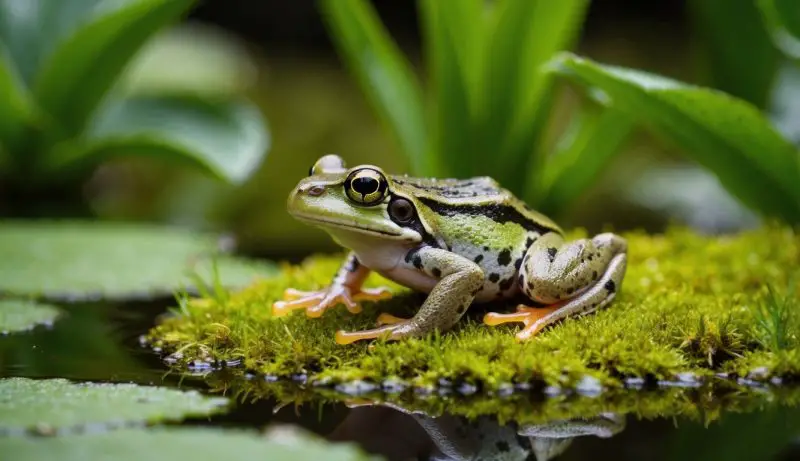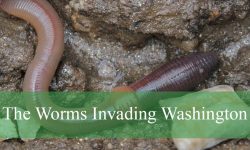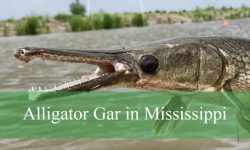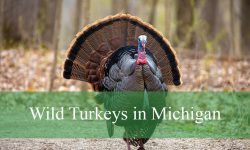When you think of Louisiana’s wetlands, your mind might jump to alligators, cypress trees, or egrets gliding over misty bayous. Yet beneath those calm waters lies another remarkable creature that defines the rhythm of these marshes—the frog. Vibrant, adaptable, and endlessly diverse, frogs are among the most essential—and misunderstood—residents of Louisiana’s wetlands.
From the croaking chorus of spring evenings to the quiet hum of summer nights, frogs tell a story of survival, evolution, and delicate balance. Louisiana is home to over 30 species of frogs and toads, ranging from the tiny cricket frog to the large bullfrog whose booming call echoes through swamps and rice fields alike.
In this in-depth guide, we’ll uncover what you didn’t know about frogs in Louisiana’s wetlands—their fascinating life cycles, hidden behaviors, ecological roles, and the threats they face in one of North America’s most biologically rich regions.
The Rich Diversity of Louisiana Frogs

A Haven for Amphibians
Louisiana’s warm, humid climate and abundance of freshwater habitats create ideal conditions for amphibians. Frogs inhabit nearly every corner of the state—from the Atchafalaya Basin to the Catahoula Lake, and from coastal marshes to pine uplands.
The wetlands serve as nurseries, hunting grounds, and protective shelters for these amphibians. Temporary ponds formed by spring rains become breeding hotspots, while permanent bayous sustain adults year-round.
Common and Iconic Species
Some of Louisiana’s most recognized frog species include:
- American Bullfrog (Lithobates catesbeianus) – the largest North American frog, famous for its deep “jug-o-rum” call.
- Green Treefrog (Hyla cinerea) – the state amphibian of Louisiana, with bright green skin and a smooth body.
- Southern Leopard Frog (Lithobates sphenocephalus) – known for its spotted pattern and adaptability.
- Cricket Frog (Acris crepitans) – one of the smallest frogs, often mistaken for insects due to its high-pitched trill.
- Cajun Chorus Frog (Pseudacris fouquettei) – a Louisiana native, its early-spring calls mark the season’s first signs of life.
Each species plays a unique ecological role while contributing to the chorus that defines Louisiana’s soundscape.
The Life Cycle of Frogs in the Wetlands
From Eggs to Tadpoles
Frogs begin life as tiny eggs laid in clusters on calm water surfaces. In the warm, nutrient-rich wetlands, these eggs hatch within days into tadpoles—gilled larvae that feed on algae and detritus.
In Louisiana’s wetlands, the high temperatures accelerate their growth. Tadpoles transform into froglets within weeks, though some species take months. This metamorphosis—from aquatic larvae to air-breathing adults—is one of nature’s most astonishing transformations.
Adapting to Unpredictable Waters
Wetlands fluctuate dramatically with the seasons. Frogs have evolved to thrive under these conditions:
- Temporary breeders lay eggs in seasonal ponds that dry up, avoiding predators.
- Permanent residents like bullfrogs prefer larger, stable bodies of water.
The ability to adapt to these changing water levels ensures frogs remain one of the wetlands’ most resilient inhabitants.
Hidden Behaviors You Never Knew
Nighttime Hunters
Frogs are mostly nocturnal, emerging after sunset to feed. Their diet includes mosquitoes, beetles, flies, and other insects—making them essential for pest control in Louisiana’s warm climate.
Bullfrogs and leopard frogs also consume small fish, snakes, and even other frogs. Their lightning-fast tongues, coated with sticky mucus, can strike prey in milliseconds.
Communication and Mating Calls
If you’ve ever stood near a Louisiana swamp on a humid night, you’ve heard the soundscape of frogs in full chorus. Each species has a distinct call:
- Bullfrogs emit deep, resonant croaks.
- Treefrogs produce sharp, metallic chirps.
- Chorus frogs trill like insects.
These calls serve to attract mates and establish territory. In dense wetlands, sound carries efficiently, creating the layered symphony that signals a thriving ecosystem.
Winter Survival
Unlike many animals, frogs don’t migrate to escape winter. In Louisiana’s mild climate, they enter a state of torpor—a semi-hibernation where metabolism slows. Some burrow into mud; others find shelter under logs or leaf litter, awaiting spring’s warmth.
Ecological Importance of Frogs
Nature’s Pest Control
Frogs consume staggering amounts of insects. A single adult bullfrog can eat hundreds of mosquitoes per night, reducing populations that spread diseases like West Nile virus.
Food for Others
Frogs are also a cornerstone of the wetland food web. They are prey for:
- Birds such as herons, egrets, and owls
- Reptiles like snakes and alligators
- Mammals including raccoons and otters
Without frogs, entire predator populations would decline, destabilizing ecosystems.
Indicators of Environmental Health
Because frogs absorb water and air through their skin, they are highly sensitive to pollutants. Their presence—or absence—serves as a biological indicator of ecosystem health.
When frog populations decline, it often signals environmental problems like water contamination or habitat loss long before other species show effects.
The Louisiana Wetlands: Perfect Frog Habitat
A Complex Ecosystem
Louisiana’s wetlands include swamps, marshes, bayous, and floodplains, each offering unique microhabitats. Shallow pools provide breeding grounds, while deeper waters protect adult frogs year-round.
Plant diversity supports this complexity—cypress knees, water lilies, and duckweed offer shelter and surfaces for laying eggs.
The Importance of Flood Cycles
Seasonal flooding rejuvenates wetlands, redistributing nutrients and creating new habitats. Frogs depend on these cycles, as fresh pools reduce predators and provide optimal breeding sites.
When flood control or drainage projects disrupt these rhythms, frog populations can suffer dramatically.
Threats to Frogs in Louisiana
Habitat Loss
Urban development, agriculture, and levee construction continue to drain and fragment wetlands. Over 1.2 million acres of Louisiana’s wetlands have been lost since the 1930s. This destruction limits frog breeding areas and isolates populations.
Pollution and Pesticides
Runoff containing fertilizers, pesticides, and industrial waste contaminates frog habitats. Because their skin is highly permeable, even small amounts of toxins can disrupt growth, cause deformities, or impair reproduction.
Invasive Species
Non-native fish and bullfrogs (outside their natural range) often prey on smaller native frogs or outcompete them for food. The introduction of exotic aquatic plants can also alter breeding grounds.
Climate Change
Rising temperatures and irregular rainfall patterns affect breeding cycles. Prolonged droughts dry up seasonal ponds, while severe storms can destroy eggs and larvae.
Disease
Amphibians worldwide face a deadly fungal infection called chytridiomycosis, which has decimated frog populations globally. Though less prevalent in Louisiana, it remains a looming threat.
Conservation Efforts
Wetland Restoration
The Louisiana Coastal Protection and Restoration Authority (CPRA) and U.S. Fish and Wildlife Service are leading large-scale projects to restore wetlands. These efforts not only protect coastlines from erosion but also create thriving frog habitats.
Protected Areas
Refuges like the Atchafalaya National Wildlife Refuge and Jean Lafitte National Historical Park and Preserve safeguard critical breeding grounds for frogs and other amphibians.
Public Awareness
Organizations such as Amphibian Ark and local universities run educational programs to teach citizens about frog conservation. Citizen scientists are encouraged to document frog calls to track population changes statewide.
Sustainable Practices
Landowners can help by reducing pesticide use, planting native vegetation, and maintaining natural pond edges—all of which benefit frogs and other wetland species.
Fascinating and Little-Known Facts About Louisiana Frogs
- Frogs “drink” through their skin, absorbing moisture directly instead of using their mouths.
- They breathe through both lungs and skin, allowing survival underwater for long periods.
- Some treefrogs can change color to blend with leaves or bark.
- A bullfrog’s call can travel nearly a mile across open water.
- Frogs shed and eat their own skin, a process that helps them stay healthy.
- Tadpoles can detect chemical cues from predators, adjusting growth rates for survival.
- Male frogs call in synchronized choruses to confuse predators and attract mates more effectively.
- The oldest frog fossils found in Louisiana date back millions of years, proving their ancient connection to these wetlands.
Myths and Misconceptions About Frogs
Myth |
Truth |
|---|---|
Frogs cause warts. |
False. Warts are caused by viruses, not frogs. |
All frogs live in water. |
Many species spend most of their lives on land. |
Frogs are pests. |
False. They are natural pest controllers. |
Toads and frogs are the same. |
Toads are a type of frog but have drier, bumpier skin. |
Frogs are disappearing only in polluted areas. |
They’re declining even in protected habitats due to global factors. |
The Future of Frogs in Louisiana
Hope Through Restoration
As awareness of wetland importance grows, more funding is directed toward conservation. Restoring wetlands not only protects frogs but also benefits fish, birds, and humans by improving water quality and flood control.
The Role of Citizens
Everyone can play a part—by supporting restoration programs, avoiding chemical lawn treatments, and reporting frog sightings to local wildlife databases.
Frogs may be small, but their presence signifies the health of the wetlands that protect Louisiana’s coastline and biodiversity.
FAQs About Frogs in Louisiana Wetlands
How many frog species live in Louisiana?
More than 30 species of frogs and toads have been recorded throughout the state.
Are frogs dangerous to humans?
No. Frogs are harmless and help control insect populations.
When is the best time to hear frogs calling?
Spring through early summer, especially after rainfall.
What’s the biggest frog in Louisiana?
The American Bullfrog, which can grow up to 8 inches long and weigh over a pound.
Do frogs survive hurricanes?
Many do by burrowing underground or clinging to vegetation during storms.
Conclusion
The frogs of Louisiana’s wetlands are more than background noise in a swamp—they are living barometers of environmental health, resilient survivors, and key architects of balance in one of the world’s richest ecosystems.
Their story intertwines with the state’s wetlands themselves: ancient, adaptable, and constantly evolving. Protecting these amphibians means preserving the heartbeat of Louisiana’s landscape—a land where every croak, chirp, and splash reminds us that even the smallest creatures play the biggest roles in keeping nature alive.






